Change is the only constant when it comes to running a business. In our digital age, change happens more quickly than ever before, and staying on the cutting edge is becoming more and more difficult.
Success in today’s markets means managing and embracing trends as they arise, and shaping your strategy to seize opportunities. This requires constant awareness of market shifts and a willingness to innovate and take measured risks.
In this article, we’ll show you how to research and analyze trends and put gained insights to use for your business.
What Is Market Trend Analysis?
In a nutshell, market trend analysis is the process of identifying and evaluating changes within your market. A trend is an assumed future development that may have a long-term effect on a selected industry or the overall market.
Uncovering and exploring market trends requires a close look at past and current market conditions to pinpoint dominant patterns. This includes analyzing data related to competitors and consumers. By taking into account shifts in consumer preferences and wider market trends, businesses can draw market scenarios to build up surefire marketing strategies.
Why Is Market Trend Analysis Important?
Market trends heavily rely on the wants, tastes, and needs of consumers, and they tend to change over time. For example, foods we consider “junk food” today were thought of as just another meal in the 1960’s. With shifts in our relationship with food, trends have emerged related to health food and vegan nutrition. From tourism and retail to catering and agriculture, trends in the health space play a role in shaping the strategies of brands that want to remain relevant.
A deep awareness of market trends makes sure your product, service, and overall business model are in line with customer demand. Business case studies often analyze companies that either managed or failed to embrace market trends—from energy producers who recognized the need to go green to the music industry that was late to understand the profound impact of digitization.
Let’s take a closer look at two companies to better understand the outcomes of upon emerging trends:
Case Study 1: Mattel’s Barbie vs. Bratz
Mattel’s Barbie lost its market leader position within a single year to the newcomer brand, Bratz. This loss is rooted in their failure to comprehend demographic and generational shifts in consumer preferences. The youngsters of the 2000s didn’t want wholesome princesses, they wanted diverse and daring characters that reflected what ‘being a girl’ really means in the new millenium.
Case Study 2: P&G Understands the Socially Conscious Consumer
By identifying shifts in market trends toward social consciousness, P&G has managed to stay ahead of competitors. They’ve employed powerful emotional triggers, evoking customer response and, thus, driving sales. Its recent #LikeAGirl campaign shifted the brand’s positioning and differentiated it from key competitors by sending messages of female empowerment to connect with the new generation of consumers.

How Can Market Trend Analysis Strengthen Your Business?
By recognizing market trends and proactively embracing them, you can bring new products to market and position your current products in ways that meet changing customer demands. At the same time, you’ll be able to pivot with market shifts to avoid being overtaken by more trend-conscious competitors. Even if your company isn’t as large as P&G or Mattel, you can use market trends analysis to:
- Enrich business forecasting: Spotting trends equips you to make adjustments today that can prepare you for the markets of tomorrow.
- Achieve market leadership: Being at the forefront of emerging trends can push your business to the front of the market.
- Generate new business ideas: Knowing what consumers want can spur new thinking around product and service offerings.
- Identify potential threats: Identifying and emerging trends early allows you to assess whether your company and your competitors are ready to seize the opportunity.
- Discover improvement areas: Understanding your market gives you a clear sense of where your business can improve to meet consumer desires and needs.
From market opportunities to risk mitigation to innovation drivers, spotting and acting on emerging market trends is essential if you want to build a sustainable business.
Getting Started: Where to Watch for Emerging Trends
When setting out to begin your market trend analysis, it can be difficult to know where exactly to begin looking for trends. Major trends often start as subtle shifts that can be hard to spot. It can help to know where to train your eyes so you can begin paying attention.
In figuring out where to look, consider these four categories:
- Technological trends
- Demographic trends
- Communication trends
- Economic trends
It’s important to remember that market trends are multidimensional and often have far reaching impacts across multiple industries. So just because you work in a low tech industry or have simple communication processes with your customers doesn’t mean trends in technology or communication won’t impact your business.
Technological Trends
Technological adoption may result in different cost drivers and innovations that bring down costs. The invention of the internal combustion engine, for instance, completely reshaped the future of the automotive industry. Technology can also impact the way consumers engage with your business. Just think about the shifts in ecommerce during the COVID pandemic.
Demographic Trends
The demographic breakdown of the population at large and within your customer base specifically are crucial to watch. For instance, millennials are the most diverse generational cohort ever seen in the US, which means that companies are dealing with a subset of consumers as ethnically and racially diverse as it has ever been. In general, you’ll want to tailor your product and marketing strategies to meet the needs of your audience, so keeping your eye on demographic trends is key.
Communication Trends
From communication channels (think social media back in the late 2000s) to different messaging (think P&G’s positioning for #likeagirl we mentioned earlier), brands who fail to recognize the shifts in communication with their consumers are likely to give place to more ‘informed’ competitors who manage to connect with their audience at the right time, in the right spot, with the right message.
Economic Trends
Often a part of a go-to-market strategy, economic factors (as well as political, social, and technological factors) are always an important market feature to consider when trying to uncover trends. The global pandemic has shown us that as much as online shopping may be on the rise, consumer spending online is still lower than the forecasts predicted before the pandemic due to overall low consumer confidence. Pay attention to economic conditions so you can adapt your strategy to meet booms and busts in the market and seize opportunities as they arise.
How Do You Gather Market Trend Data?
There are a variety of ways to gather market trend data. From trusted news sources and industry reports to digital marketing tools and analytics software, you’ll need to employ a variety of techniques to gain the deepest possible view of your market.
Considering the four categories we explored in the last section, let’s take a look at some sources for gathering data. We’ll look specifically at three types:
- News & industry publications
- Market analysis software
- Public databases & consumer sentiment data
With these three options, you should be able to gather what you need to begin analyzing market trends and generating insights to bolster your strategy.
News & Industry Publications: Staying on Top of Megatrends
Major news publications like Forbes, Inc., Business Insider, or the New York Times often feature articles that drill down on the hottest trends across various markets.
These publications typically focus on what we might call “Megatrends”—the big trends that develop over a longer period of time and have large impacts across multiple markets. Here, we can look to the trends mentioned above with Barbie and P&G as examples.
The benefit of articles published in major outlets is that they’re written by highly knowledgeable journalists who often do a great deal of research before publication.

Along with publishers, major consulting firms like EY, PWC, McKinsey, Deloitte and others produce annual reports. These reports often dedicate a lot of attention to megatrends. Most of the time, they’re available to the public, though some data may require a purchase.

By looking at these broad market megatrends using news and industry publications, you can get a sense of large market shifts and begin looking to individual companies for more specific insights.
Take the delivery megatrend that began picking up speed at the start of the COVID pandemic. Companies are trying to compete based on who’s faster, more accurate, and more flexible for consumers. Amazon just got a license to operate drones for delivery—marking a potential trend other delivery companies should watch out for if they want to stay in the game and compete with Amazon in the future.
As a side note, Semrush also releases reports based on data from various tools. These reports are often related to digital marketing, though our State of Mobile Report and Ecommerce Study offer great insights into emerging trends.

Market Analysis Software: Exploring Traffic & Historical Data
Market Analysis software can give you an edge when it comes to uncovering emerging trends. By looking at subtle shifts in the market, you can often begin to understand where the market is heading before your competitors do.
Free options are a great place to start…
In terms of free options, you can explore Google Trends, which allows you to enter a search query and generate an understanding of the level of interest in a particular keyword.
Here’s an example for the keyword “Mortgage rates.” Google Trends offers a variety of widgets that show interest over time, interest by region, related searches, and more. You can also filter to view by category or across longer periods of time.

Semrush Open .Trends is another free option for viewing traffic trends for any industry in any location. The report shows market traffic, increases or decreases in traffic over time, competition levels, and market traffic dynamics.
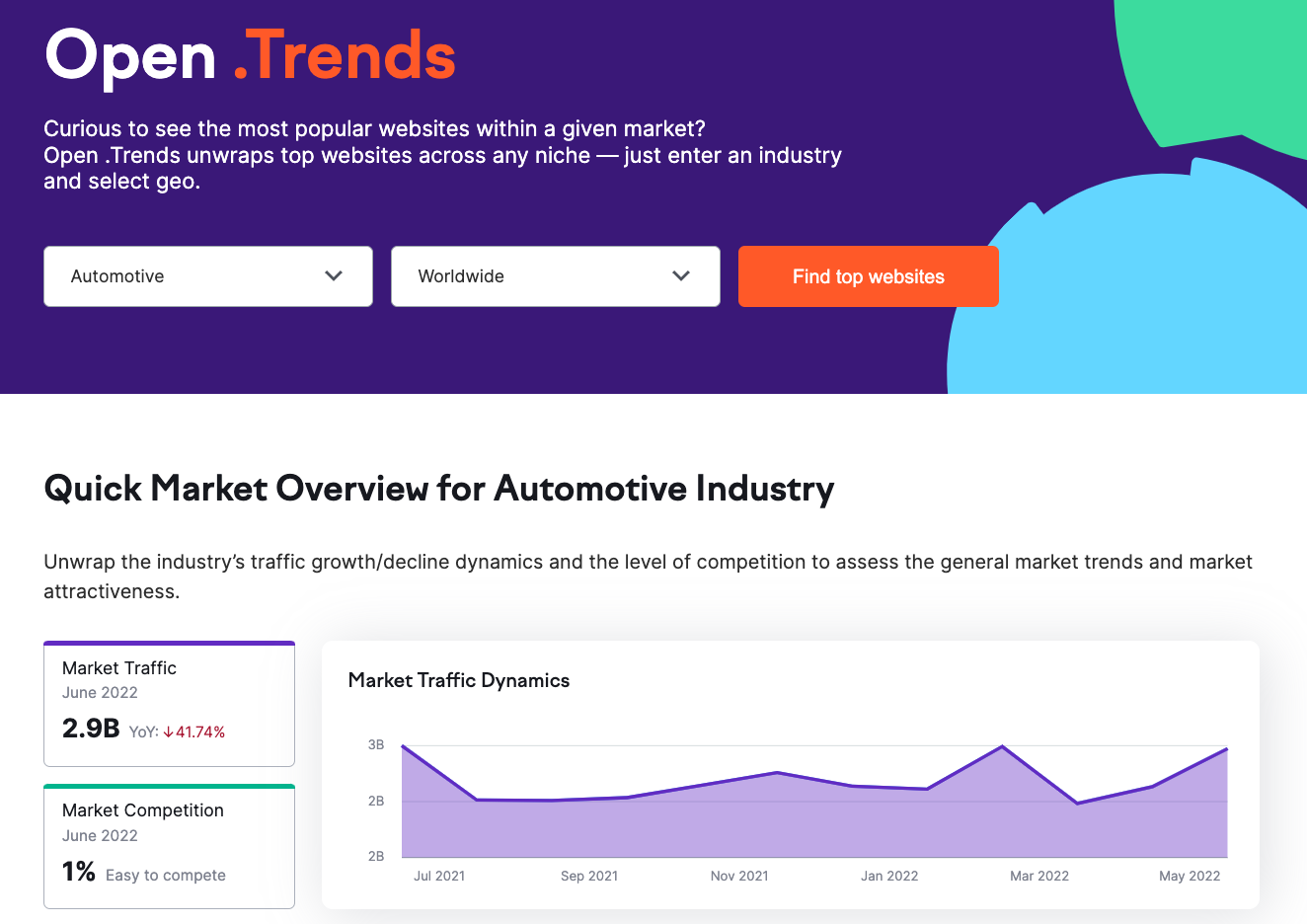

It also includes a list of top websites in the industry with data about their traffic growth, traffic sources, and device type. The sites with the largest growth in traffic can reveal shifting interests, and the device type and traffic source data can provide insight regarding how consumers engage.
In-depth data viewed across time is a powerful way to identify trends…
If you’re interested in more in-depth data, the Market Explorer and Traffic Analytics tools from Semrush can offer a ton of insights for any industry. One of the most powerful aspects of these tools is access to historical data, which allows you to pinpoint market shifts in their early stages.
Some widgets, like the Growth Quadrant found in the Market Explorer Overview Report offer quarter-over-quarter or year-over-year views of data, providing a visual depiction of trends among top market players.
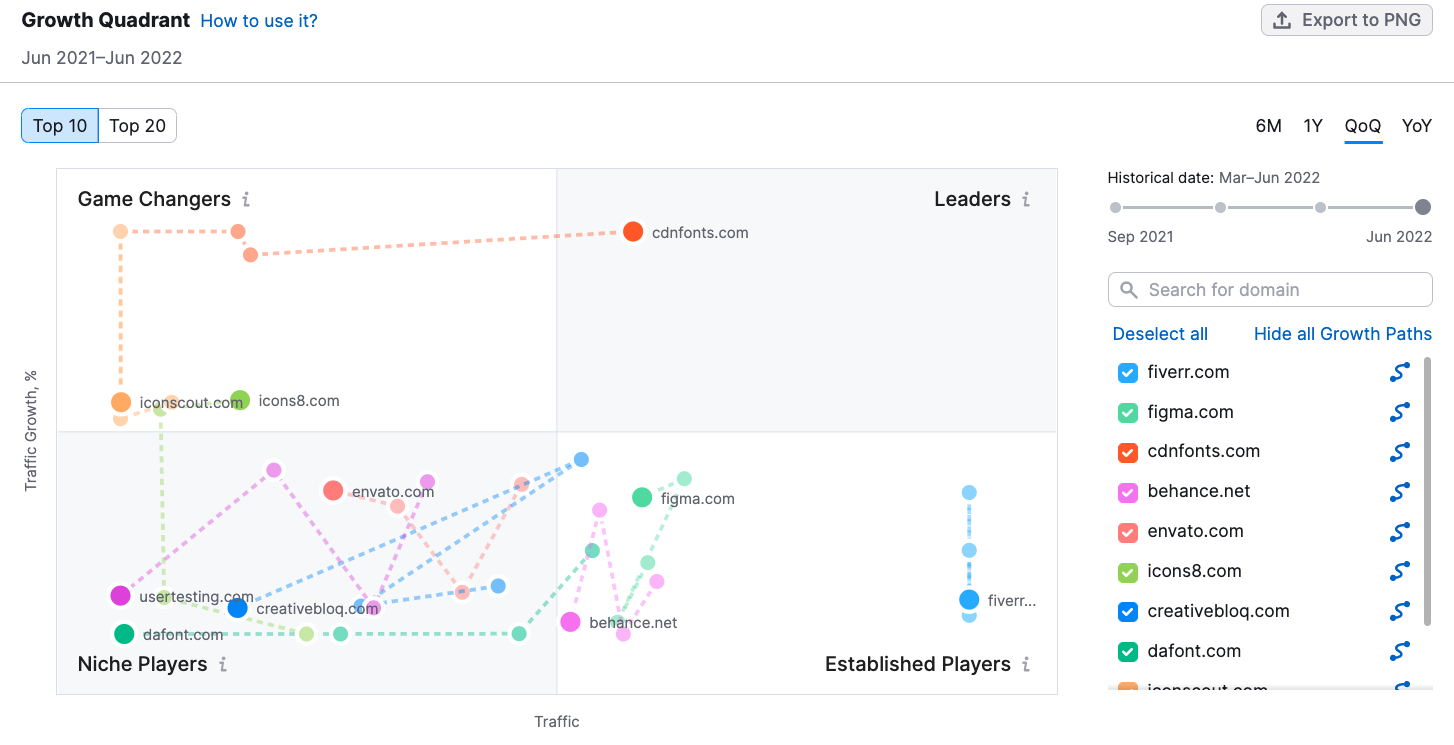
You can also select specific date ranges and examine differences in data across time to uncover trends. For example, here’s a look at the Traffic Generation Strategy and Social Media Distribution Strategy graphs from Market Explorer’s Benchmarking Report. The first image shows data for June 2020, and the second image shows data for June 2022.


Close inspection and comparison between these two moments in time reveals some monumental shifts in the traffic generation and social media distribution graphs.
For example, In 2020, referral traffic (the green portion of the bar on the graphs to the left) played a significant role in the retail market. Though by 2022, referral numbers have shown a significant decline. In terms of social media, you might notice Facebook showing some decline, and Youtube and Pinterest gaining traction.
The Top Pages report found in the Traffic Analytics tool is another example of a resource that lets you see what pages on competitors websites receive the most traffic. The Insights portion of the report can help you identify what pages are new to the site, or which ones are gaining traction or declining in popularity. This data can point you immediately to trends within the market.

For example, the image above shows the Top Pages Report for Adidas.com from June 2021-2022. Considering the first two cards—which link to pages that saw a 12,000% and an 8,000% increase respectively—we discover that the pages on the rise sell shoes inspired by collaborations with designers from across the globe.
Digging deeper using the “view more” button, we discover stats for the particular page.
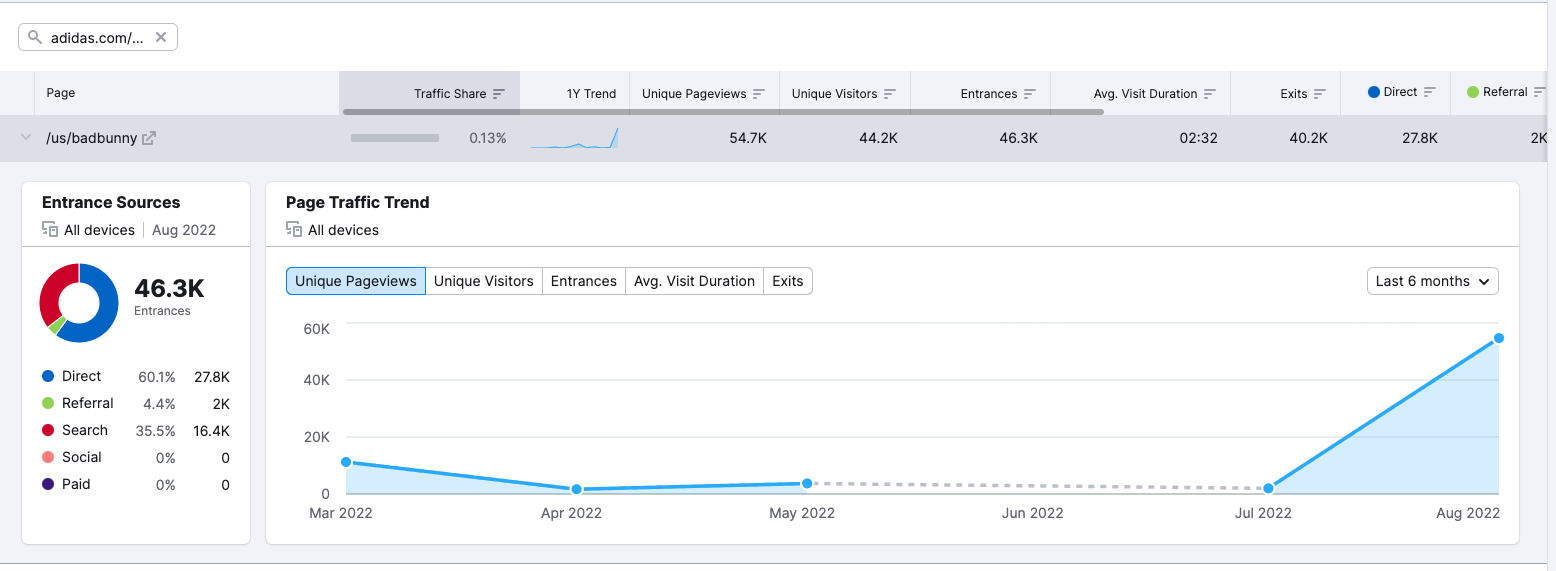
We can see the trend over time, the traffic sources, and have access to data around page entrances and exits. Taking this data, we can think about emerging trends and consider how we might integrate these insights into our own strategy.
Public Databases & Customer Sentiment Data: Analyzing Conditions on the Ground
To get a sense of what’s happening within more specific segments of your target market, there are a number of public databases and crowdsourced data platforms that can provide useful insights.
Government websites (those with .gov at the end of the URL) are great places to dig up accurate and in-depth data about people and businesses. For example, US Census Data offers data on demographics, income levels, and also offers free industry reports. It’s an invaluable source of local US demographic data.
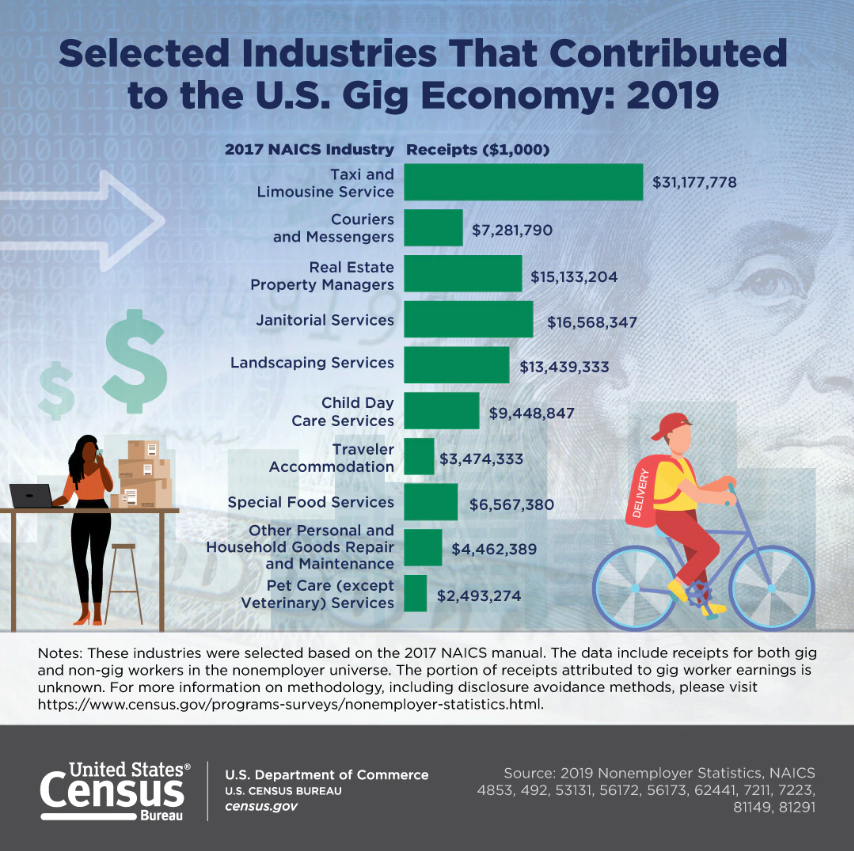
YouGov is a similar kind of source that automatically builds an average consumer profile based on the company, personality, or object you enter. The profile may include information regarding demographic and sometimes psychographic factors.
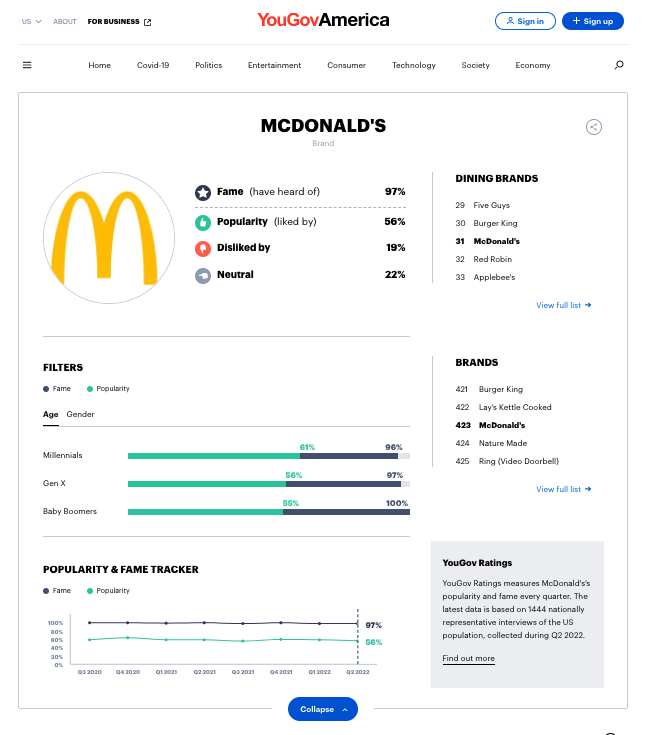
Another great resource for trends data is Pew Research. The Pew Research Center conducts public opinion polling, demographic research, content analysis, and other data-driven social science research. Their mission is to inform the public about the issues, attitudes, and trends shaping the world.
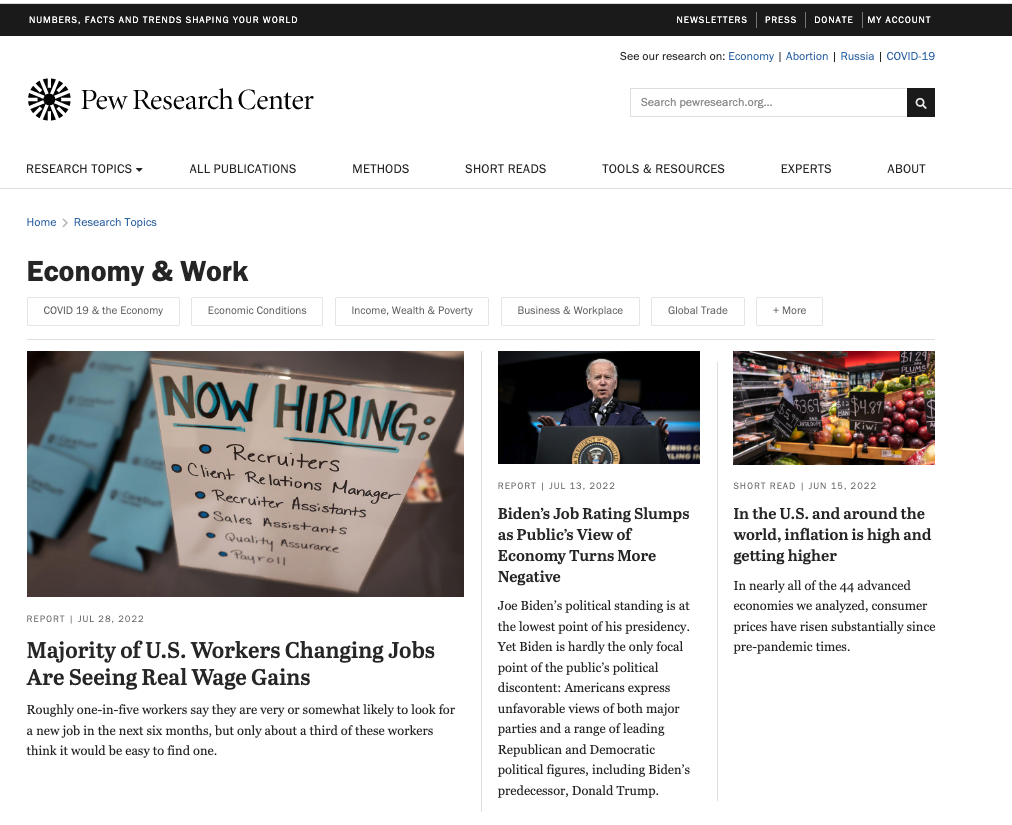
Finally, you can look to websites like G2 for data on consumer sentiment about certain products and companies. Exploring ratings and reading reviews can offer qualitative insights into what consumers are really looking for.
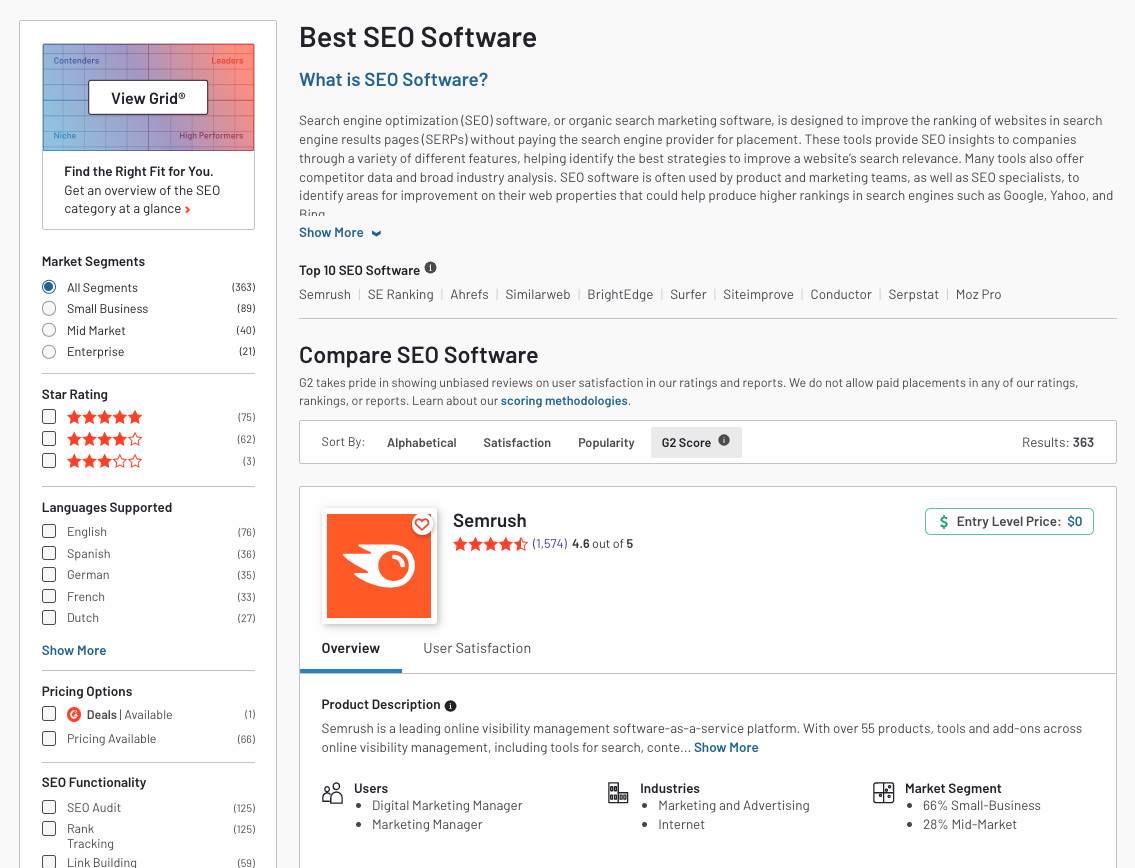
Putting Market Analysis to Work for Your Business
The actual work of strategy building doesn’t end with spotting market trends—this is just the beginning. Recognition is just the first step. From there, you’ll need to embrace changes and adapt.
Once you’ve identified the most important trends in your industry, you can ask these questions:
- Which market trends are most relevant for my particular business?
- How does a given trend impact my business? Am I going in the right direction, or should I shift my focus to embrace it?
- What does this trend mean for my business? What happens if I act on it or ignore it? Are my competitors already taking steps to embrace this emerging trend?
Once you answer these questions, it should be easier to prioritize your efforts and decide which changes to implement with the goal of opening space for innovation and to staying relevant within your market.
